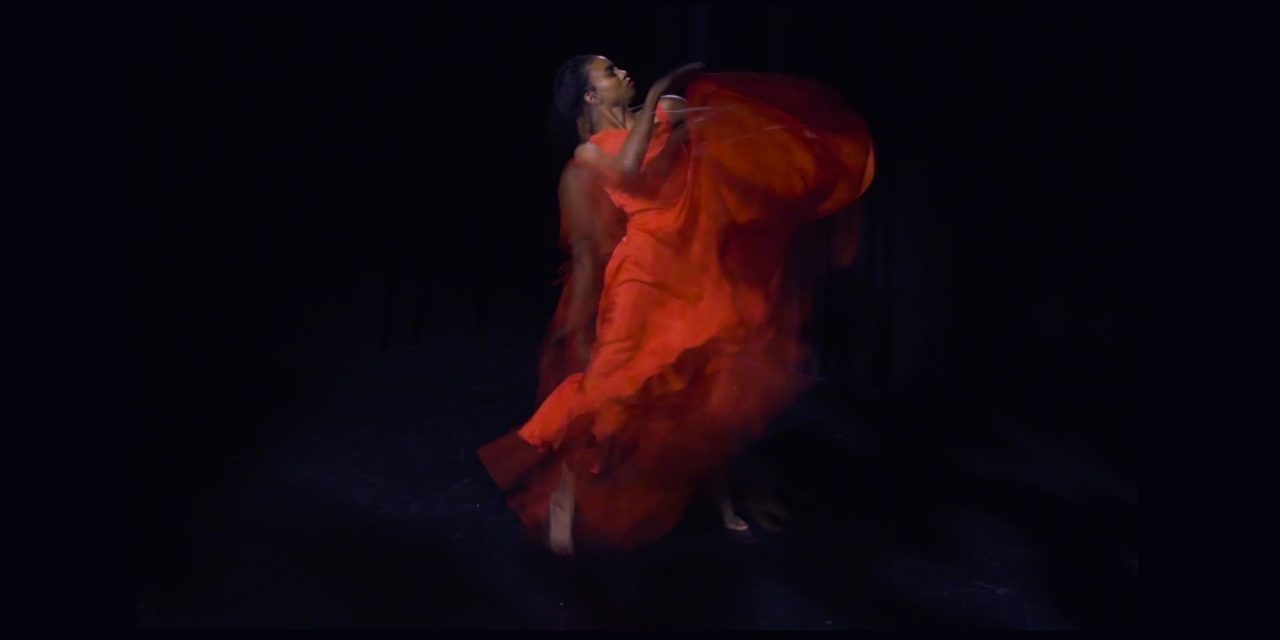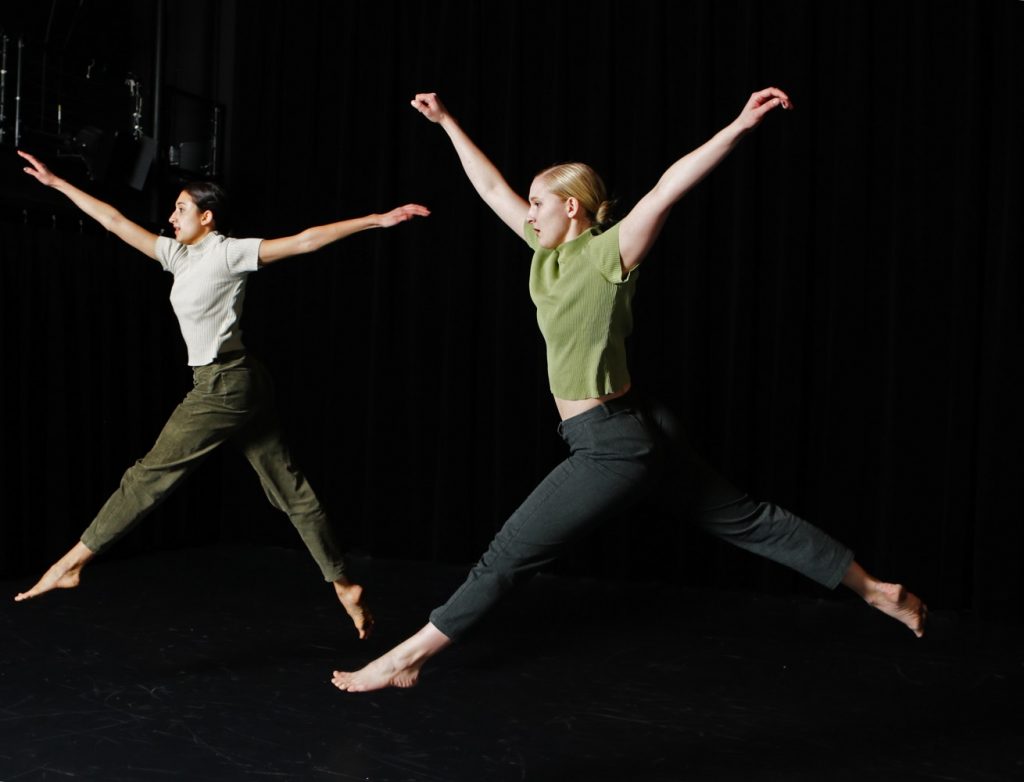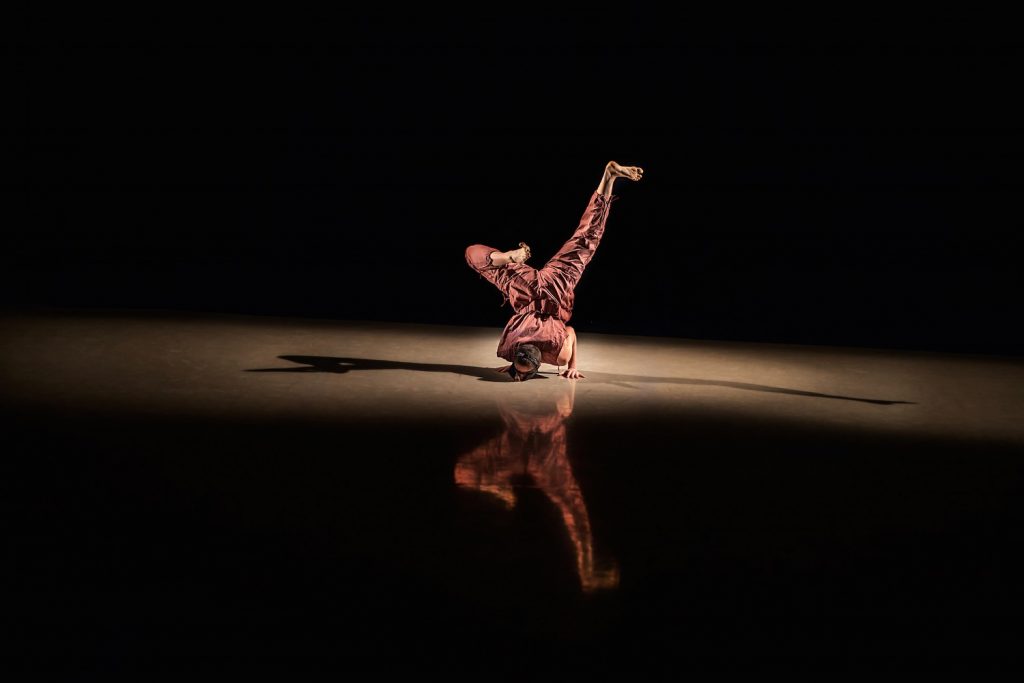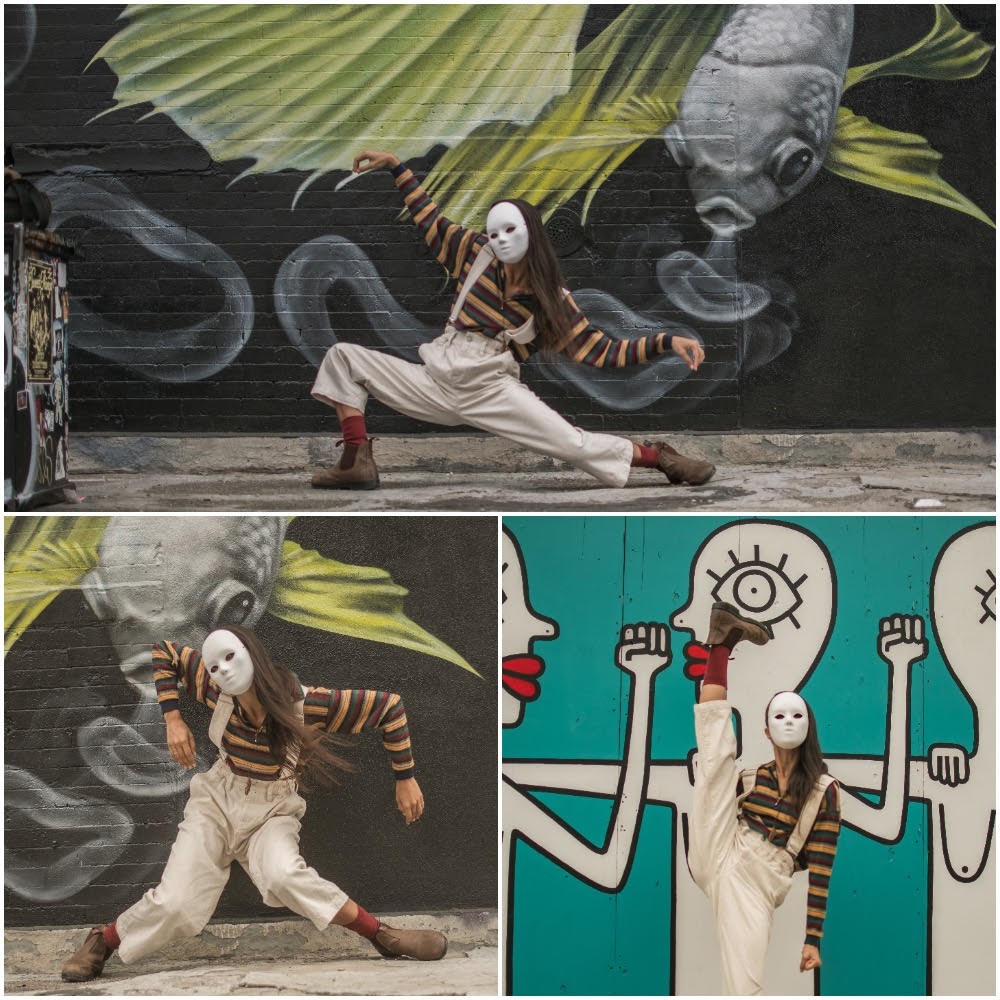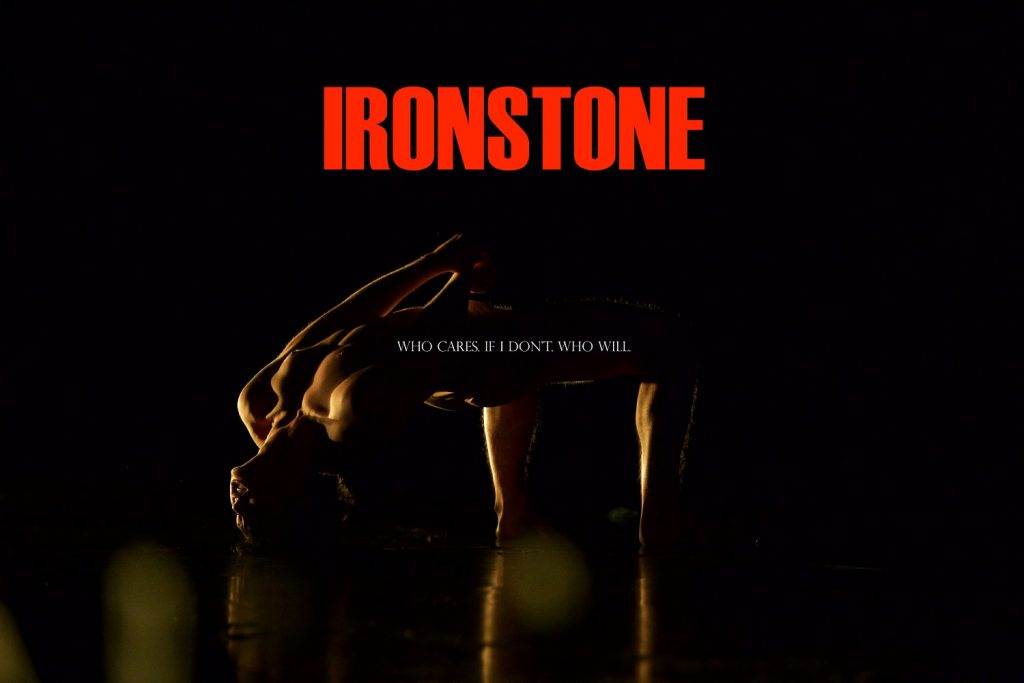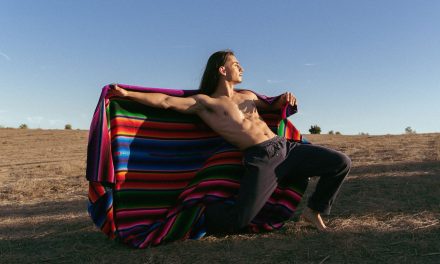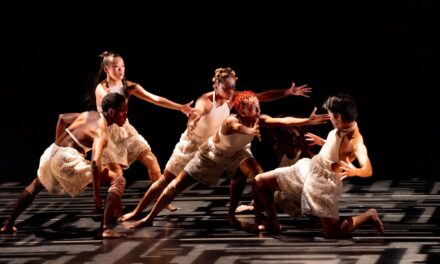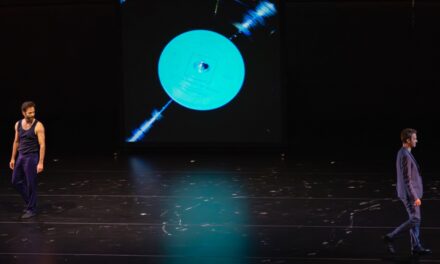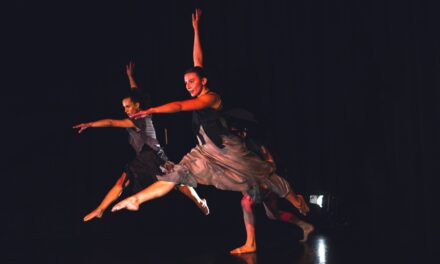Founded in Sydney Australia by writer/director/producer Mark Cleary, the Short+Sweet Festival has been making its rounds in cities across the globe since 2002, showcasing ten-minute (or shorter) works of film, theater, music, and dance by a multitude of emerging and established artists. This year, it has made its way to Los Angeles where its different branches have been presenting productions in small theaters throughout Hollywood. Among them is Short+Sweet Dance, which ran from October 11 through 14 at the obscure, but famously named Marilyn Monroe Theatre on Santa Monica Blvd. Last Thursday night’s show provided a keen peek at the myriad of post-modern, contemporary, and avant-garde experimental submissions that have become synonymous with this festival.
First up was New York–based choreographer Sofia Nappi’s Wabisabi—a short dance film featuring a serious-looking trio (Elias Rosa, Joey Picciotto and Nappi) showcasing absolute technical precision. James Keane and Samuel Sim’s original music added drama to the intense short flick reminiscent of a haunted period piece. The dancers’ costumes consisted of tan pants and cream-colored shirts with long, bellowing sleeves that added grace to their arms, which floated above them as they bent their knees into and out of squatting positions.
Appearing on screen two at a time until finally joined by the third performer (Picciotto), the group maintained a steady sameness throughout the entire performance. Though no clear storyline existed, the presumed goal was the acceptance of a world full of transience and imperfection, as defined by the Japanese philosophy after which the piece is named. However, the group’s precision conveyed the opposite concept as their synchronicity remained strong throughout, only shifting occasionally in anticipation of a pattern change. Its flow made even more seamless thanks to the fading effect between scenes. The result was a very cohesive and strong piece that embraced pure movement—a strong start to a dance festival.
Juli Kim’s Ave Maria came next with an entirely different approach to capturing beauty. Kim, who is known for her modern, interpretative Korean-fusion dances performed a more Western-modern piece for the festival. Subtle influences from her past peaked through her work by way of gliding arm gestures. Her transitional movements were slow enough to make her appear as though she were suspended in a tank of water, with each extension fully embracing Jo Sumi’s gorgeous rendition of Giulio Caccini’s Ave Maria. Dressed in all-black, Kim embodied the pain and pleasure behind every note, enchantingly conveying the description she included in her program—” the pain of sending a beloved to a place from which he/she will never return.”
Each step she took across the stage allowed her arms and facial expression to be the focus of her work, especially in moments where she spun slowly, opening up her skirt to reveal a long side train that further emulated flowing water. The balletic undertone present throughout her routine paired well with the operatic music. Her final flairs, which included a gentle rolling of her shoulders and lifting of her arms suggested a bird taking flight or a soul flying away as she looked longingly into the distance one last time, raising her hand as she prepared to let go of a great treasure. Her contribution to Short+Sweet was one to be remembered.
The following piece, “Portrait of a Bigger Picture” by Brooklyn-based Corinne Shearer, was a complete juxtaposition to Kim’s work via an unusual soundtrack and an uneven performance that was at times pleasantly bizarre and at other moments lackluster and seemingly poorly executed. Divided into three sections, the first began with the four dancers, Alex Bitner, Cody Hayman, Keerati Jinakunwiphat and Shearer, placing red chairs in the center of the stage and moving along to silence. As the quartet extended their limbs and ambled their way across the space, a quiet talking was heard, which transitioned into “3, 2, 1, lift off.” Hayman and Jinakunwiphat launched into a duet to an NPR podcast, which included an interview with an unnamed astronaut about floating in space. Though the material was unique and provided the ensemble with a unique soundscape which often dictated their movement, the overall energy of the piece was lacking at times. Upon hearing the rumbling sound of the rocket’s engines, Jinakunwiphat’s hand stand, which was appropriately done in slow motion, ended with a flop as her legs came down suddenly before she had the chance to flex them above her head. Her performance in general seemed dulled down next to Hayman’s who was clearly more enthusiastic and fuller of dynamic expressions during scenes where the performers chose to lip sync to the interviewer’s and interviewee’s questions and answers.
The other two parts were divided among two ’50s/’60s sounding songs billed as original music called “Waikiki” by composer Jon Brion and “Connie” by Richard Brandon. They became the background to a duet by Bitner and Shearer. Though less creative, their altering positions as they sat and stood in front of the repositioned red chairs were smoother. Overall, the piece was incomparable to any other work in the program, carrying with it a fresh take on contemporary dance mostly thanks to its “musical” choice. Though less obviously so, the choreography was also uncommon, subtler in the statement it made about stepping outside the box.
Perhaps the most enthralling piece of the night was the fourth performance—The Human Condition: Absent Presence by choreographer and soloist Ashley Menestrina, who also edited and arranged the original music she danced to by Nomine and Loscil-Plume. The routine was an uncomfortable look at the possibilities of the human body. Few people could likely move the way Menestrina does and those who can manage it may have a difficult time executing it so smoothly. Her synopsis included a quote from Rupi Kaur’s the human condition:
- i long
- for you
- but you long
- for someone else
- i deny the one
- who wants me
- cause i want someone else
Her movements channeled that spirit of longing as she rolled her body in ways that seemed beyond her control. Menestrina, who was dressed in a brown jumpsuit and sported traditional horse blinders, was still able to make her eyes appear expressive and wild as she looked at her body jumping to the beats in the music. The introduction to the song echoed: “I won’t forget you. What do you hear? I hear my own heartbeat.” Her shifts were sharp and poses purposeful and angry. When on the floor, she appeared as though she was trying to stop her body from moving any further, sitting on her hands and feet, and shoving her appendages under her torso to stop them from bouncing. Her twisting ankles appeared as though they would break off at any moment. Overall, her fight against her body’s will to let all her feelings run crawling out of her skin beneath the magnifying spotlight was a haunting spectacle that pushed the tone of the entire evening right to the very edge.
Continuing that same feeling was the defiantly named Who Cares. If I Don’t. Who Will. by soloist Ironstone. Steve Moore’s soundtrack was windy and wild and matched the unhinged attitude with which Ironstone performed. Beginning at first with a stumble and short breaths, his panting devolved into a full-blown panic attack as he began hyperventilating, rattling his chest uncontrollably before letting out a loud, deep scream. The sound pierced through the air for several seconds before Ironstone began dancing—a scary introduction to a total identity crisis.
His contemporary movements involved slow strokes of his arms, stretches and soft poses before he began speeding up the process, eventually whirling so rapidly, he resembled a stick figure. His black, long–sleeved-and-legged leotard illuminated his face, hands and feet in an eerie way beneath the dimmed lights, making him look inhuman as his arms rotated in his shoulder sockets like windmills. As the music became more similar to an ’80s soundtrack, à la Stranger Things, the mood also became more intense, eventually resulting in him taking off his clothing completely before crawling on the ground and arching his torso upward toward the crowd. His most erratic and slow, painful-looking bends manifested from his nudity and freedom, concluding with a bleak ending that resulted in him picking up his clothes and walking off stage without so much as last look at the audience who practically gave him a standing ovation.
Rounding off the night was the much more relaxed and ethereal Unspoken Words by Zoe Rappaport. Dancer Zen Waterford’s rhythmic movements were more sensual than the raw sexuality showcased in the previous piece. Performed to original music by The Soil, the piece also dealt with identity and what lies in between. The concept was presented through Waterford’s body rolls to modern R&B music, clutching her head and closing her eyes as if fighting between a full release of emotion and the desire to keep her feelings hidden.
From the moment Waterford parted the curtain and emerged, backlit by a strong blue light, which gave her a celestial quality, the ease in her forward gait created a tranquil and steady atmosphere. Her internal drama was shown through her jutting hips and sudden kicks that caused the gorgeous wine-colored, multi-layered silk dress she was wearing to appear holographic as the skirt flared upward and Waterford’s head bent backward soulfully. This captured a live version of the effects seen in Rappaport’s video, published in late August, and gave the routine a more dynamic appearance. Though simpler than some of the other pieces, Rappaport’s work made a statement with its subtlety, much as Wabisabi had by allowing the audience to focus on every sway and pop Waterford presented with her movement before she disappeared back into the blue light behind the curtain.
Altogether, the festival became a good opportunity to see a wide variety of dancing, neatly compiled into a sixty-minute show that gave less well-known, futuristic choreographers and performers a chance to show off their work. Short+Sweet also provided viewers with a peek at the early stages of what could be the next stage in this city’s continuously developing dance scene. Hopefully, Thursday night’s turnout is an indication that the festival will be back next year to take LA’s pulse once again.
For more information on Short+Sweet Festival, click here.
Featured image: Unspoken Words. Choreographer: Zoe Rappaport. Photo courtesy of RappaportDance.com

